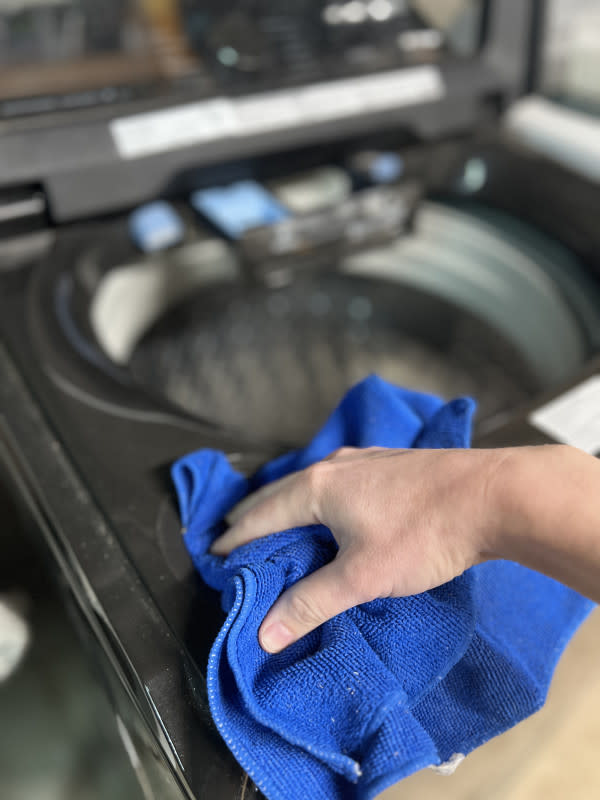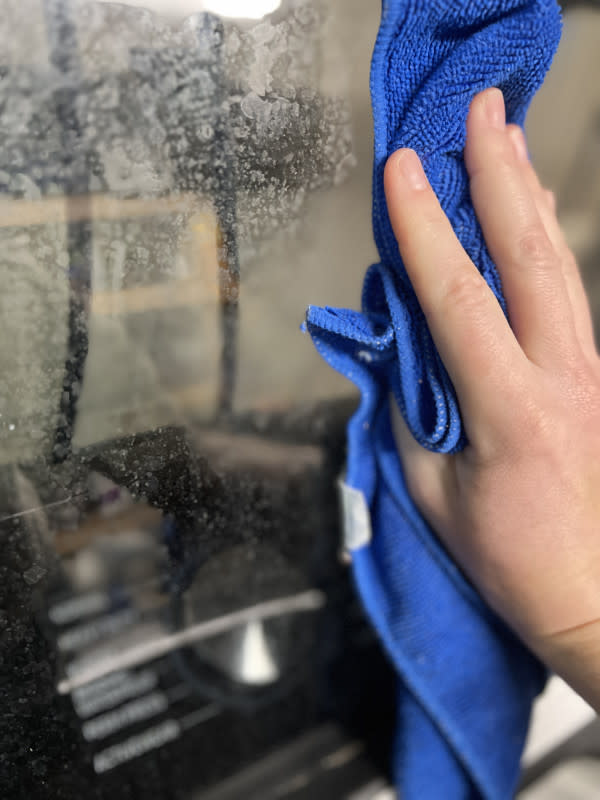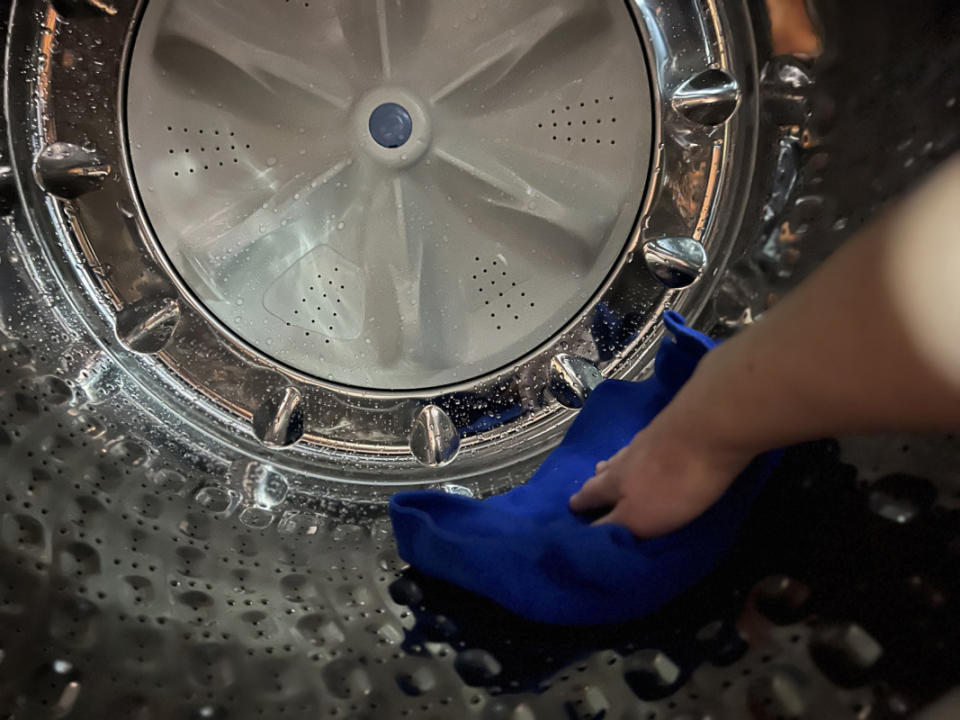How to Clean Your Washing Machine—Without Bleach
Your washing machine is a magnet for mold and mildew. Make cleaning your washing machine a routine to prevent the transfer of odors to your wardrobe. With a little work, your system will continue to run at peak performance and keep your laundry smelling fresh.
How Can My Washing Machine Be Dirty?
Residues in the drum result from factors like excessive detergent use, overusing fabric softener, and hard water deposits. If your rinse cycle uses cold water, laundry detergent residue may remain, leading to a soapy buildup.
Unpleasant odors may develop from growth of mold or mildew. Don't worry, it's not your fault. Front-loading washing machines in particular have inadequate ventilation which traps moisture and breeds smelly bacteria.
But there is a solution. With only a few ingredients, you can clean your washing machine in mere minutes.
How to Clean
1. Gather Your Supplies
White vinegar - this natural disinfectant can remove mineral buildup and soap residue.
Baking soda - a gentle abrasive that neutralizes bad smells.
Microfiber cloth or cleaning rag
Water
Old toothbrush
Bleach is a popular cleaning agent, but it can prematurely wear out rubber gaskets. Bleach combined with vinegar also produces a toxic gas—never use the two cleaning ingredients at the same time.
2. Clean the Dispensers
Remove detergent and fabric softener dispensers.
Soak them in warm water and scrub them with a toothbrush.
Wipe down the compartments with a damp cloth.

Emily Fazio
3. Run a Hot Water Cycle
Set the temperature to the hottest setting.
Pour white vinegar into the detergent tray.
Let the appliance run through a complete cleaning cycle.
Repeat these steps one more time if there is excessive residue buildup.
4. Wipe Down the Washer Drum
Open the door and use a damp microfiber cloth to wipe out the inside of the drum.
Pay attention to any stains or residue.
5. Clean the Window
Use the cloth to clean the hard water spots off your washing machine window.

Emily Fazio
5. Tackle the Rubber Seal
Inspect the rubber door seal for mold or mildew.
Mix equal parts water and vinegar, dip in a rag, and thoroughly wipe the seal. Don't forget to get inside the lip where moisture can hide.
6. Clean the Washing Machine Filter (Front-Loading Machines)
Refer to your machine's manual to locate and clean the filter.
Remove lint and debris, rinse in fresh water, and reinstall.
7. Run a Baking Soda Cycle
Sprinkle 1/2 cup of baking soda into the drum.
Run a second complete cycle with hot water to deodorize and further clean.
8. Dry the Drum
Wipe down the drum. Use a dry microfiber cloth to remove any remaining moisture.

Emily Fazio
9. Air it Out
Leave the door ajar. Leaving your washing machine door ajar between uses to allows for regular air circulation and inhibits mold growth.
10. Perform Regular Maintenance
Repeat this deep clean every 1-3 months.
Opt for high-efficiency detergent to minimize residue.
Frequency of Cleaning
Monthly Cleaning. For optimal maintenance, consider a deep cleaning every one to two months.
Regular Wipe Downs. Wipe down the interior and exterior of the machine, including the door seal, after each laundry session to prevent moisture buildup and the growth of mold or mildew.
Consider the Water Quality. If you have hard water or notice residue buildup, you might need to clean your machine more frequently. Hard water can contribute to mineral deposits and soap scum.
Special Circumstances: If you use fabric softeners or liquid detergents that can leave residues, or if you notice a persistent odor, consider more frequent cleanings.
Related: Leaf Home Predicts 2024 Trend in Home Water Filtration Systems
What should you do if it still smells like mildew?
Washing machines are the perfect environment for bacteria growth. Front-loading machines are more susceptible to mildew, as the design of the rubber door seal can trap excess moisture in an already warm, poorly ventilated appliance.
If the smell persists in the drum or on your clothes, try these tips:
Repeat the initial cleaning with white vinegar
Clean the rubber door seal in front-loading machines
Inspect and clean the drain pump filter
Check for mold in hard-to-reach areas inside the drum
Sprinkle baking soda between loads to neutralize odors
Leave the machine door and detergent dispenser open for proper ventilation
Test the water supply for impurities

